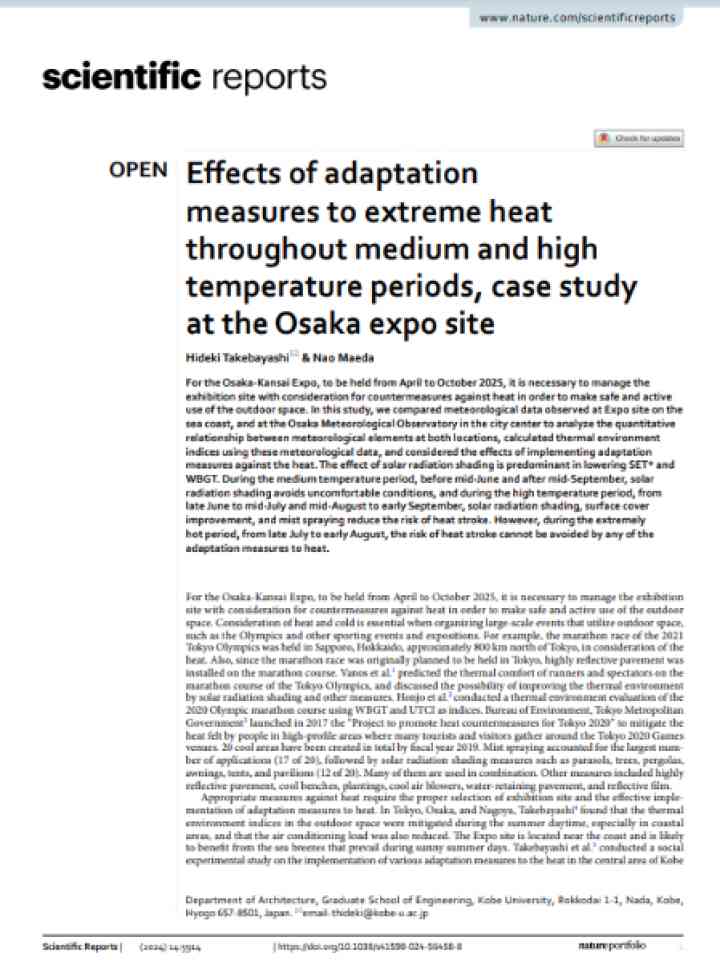Effects of adaptation measures to extreme heat throughout medium and high temperature periods, case study at the Osaka expo site
For the Osaka-Kansai Expo, to be held from April to October 2025, it is necessary to manage the exhibition site with consideration for countermeasures against heat in order to make safe and active use of the outdoor space. In this study, the authors compared meteorological data observed at Expo site on the sea coast, and at the Osaka Meteorological Observatory in the city center to analyze the quantitative relationship between meteorological elements at both locations, calculated thermal environment indices using these meteorological data, and considered the effects of implementing adaptation measures against the heat.
The study finds that the effect of solar radiation shading is predominant in lowering standard effective temperature (SET*) and wet bulb globe temperature (WBGT). During the medium temperature period, before mid-June and after mid-September, solar radiation shading avoids uncomfortable conditions, and during the high temperature period, from late June to mid-July and mid-August to early September, solar radiation shading, surface cover improvement, and mist spraying reduce the risk of heat stroke. However, during the extremely hot period, from late July to early August, the risk of heat stroke cannot be avoided by any of the adaptation measures to heat.
Explore further
